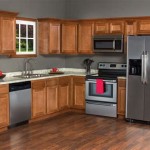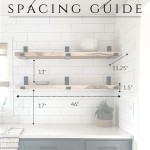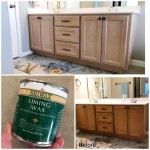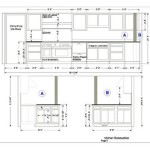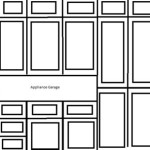Retro Kitchen Cabinet Hardware: A Guide to Timeless Style
Retro kitchen cabinet hardware encompasses a broad range of styles, materials, and finishes that evoke a specific era, typically spanning from the 1930s to the 1970s. This design trend offers an opportunity to infuse personality and historical charm into contemporary kitchens. The selection process requires careful consideration of the overall kitchen aesthetic, the selected color palette, and the desired level of authenticity.
The resurgence of interest in vintage aesthetics has driven a renewed focus on sourcing and replicating retro cabinet hardware. Original pieces can be found through antique stores, estate sales, and online marketplaces specializing in vintage goods. Alternatively, numerous manufacturers now offer reproduction hardware meticulously crafted to match the designs and materials of bygone eras. These reproductions provide the advantage of consistent availability and often incorporate modern manufacturing techniques for enhanced durability and functionality.
Identifying Key Characteristics of Retro Cabinet Hardware
Understanding the distinguishing characteristics of retro cabinet hardware is crucial for accurate identification and selection. Several factors contribute to a hardware piece's retro designation, including its shape, material composition, finish, and overall design philosophy.
Shapes prevalent in retro hardware often feature rounded edges, streamlined profiles, and geometric forms. Common examples include: *
Knobs:
Round, mushroom-shaped, or stylized atomic designs. *Pulls:
Bar pulls with rounded ends, cup pulls, or decorative handles with intricate details. *Latches:
Simple, functional latches with visible mechanisms or decorative backplates.Materials commonly used in retro cabinet hardware include metal alloys like brass, chrome, and nickel, as well as plastics such as Bakelite and Lucite. Brass hardware often features a warm, golden hue, while chrome offers a sleek, reflective surface. Nickel provides a softer, more subdued metallic finish. Bakelite, an early form of plastic, is characterized by its durability and distinctive colors, often found in geometric designs. Lucite, a transparent acrylic resin, offered opportunities for incorporating bright colors and unique shapes.
Finishes play a significant role in defining the retro aesthetic. Polished chrome and brushed nickel were popular choices for emphasizing a clean, modern look. Antique brass and oil-rubbed bronze added a touch of warmth and historical character. Two-tone finishes, combining different materials or colors, were also common, further enhancing the visual interest of the hardware.
The overall design philosophy of retro cabinet hardware often reflects the prevailing style of the era. Mid-century modern hardware, for instance, emphasizes clean lines, geometric shapes, and a minimalist aesthetic. Atomic-era designs incorporate stylized representations of atoms and space exploration, reflecting the futuristic aspirations of the time. Art Deco-inspired hardware features geometric patterns, luxurious materials, and a sense of opulence.
Exploring Different Eras and Their Hardware Styles
The term "retro" encompasses a diverse range of decades, each with its distinct design trends. Understanding the nuances of each era allows for a more targeted and authentic approach to selecting cabinet hardware. Three prominent eras within the retro spectrum include the 1930s and 1940s, the 1950s, and the 1960s and 1970s.
The 1930s and 1940s saw the rise of Art Deco and Streamline Moderne styles. Cabinet hardware from this era often features geometric patterns, stepped designs, and luxurious materials like Bakelite and polished chrome. Knobs were typically round or octagonal, while pulls were often bar-shaped with rounded ends. The overall aesthetic emphasized elegance, sophistication, and a sense of optimism in the face of economic hardship.
The 1950s embraced a more modern and playful aesthetic. Mid-century modern design principles emphasized clean lines, organic shapes, and a connection to nature. Cabinet hardware from this era often featured simple, streamlined forms in materials like brushed nickel and chrome. Atomic-inspired designs, incorporating stylized representations of atoms and space travel, were also popular. Color palettes were often bright and cheerful, reflecting the optimism and prosperity of the post-war era.
The 1960s and 1970s witnessed a diversification of design styles, ranging from the clean lines of Scandinavian modernism to the vibrant colors and bold patterns of Pop Art. Cabinet hardware from this era often incorporated plastic materials like Lucite in bright, saturated colors. Geometric shapes and organic forms remained popular, while new materials like stainless steel and anodized aluminum emerged. The overall aesthetic was characterized by a sense of experimentation, individuality, and a rejection of traditional norms.
Incorporating Retro Hardware into Modern Kitchen Designs
Integrating retro cabinet hardware into a modern kitchen requires a thoughtful approach to ensure a cohesive and balanced design. Several strategies can be employed to successfully blend vintage and contemporary elements.
Consider the overall style and color palette of the kitchen. If the kitchen features a predominantly modern aesthetic, select retro hardware that complements the existing design elements. For example, chrome bar pulls with rounded ends can add a touch of mid-century modern flair to sleek, minimalist cabinets. Conversely, if the kitchen has a more traditional or eclectic style, choose retro hardware that enhances the existing character and charm.
Mixing and matching different styles of retro hardware can create a unique and personalized look. Experiment with combining knobs and pulls from different eras to achieve a layered and visually interesting effect. However, it is important to maintain a sense of cohesion by selecting hardware with similar finishes or materials.
Pay attention to the scale and proportions of the hardware in relation to the cabinet size. Smaller cabinets typically require smaller knobs and pulls, while larger cabinets can accommodate larger hardware. Ensure that the hardware is comfortable to grip and easy to use. Functionality should never be sacrificed for the sake of aesthetics.
Consider the placement of the hardware on the cabinet doors and drawers. Consistent placement creates a sense of order and harmony, while strategic variation can add visual interest. For example, placing knobs on upper cabinets and pulls on lower drawers can create a functional and aesthetically pleasing arrangement.
Balance vintage hardware with modern appliances and fixtures. The contrast between old and new can create a dynamic and visually engaging space. For example, pairing retro cabinet hardware with stainless steel appliances and a modern faucet can create a balanced and stylish kitchen design.
Ultimately, the key to successfully incorporating retro cabinet hardware into a modern kitchen is to embrace creativity and experimentation. Do not be afraid to mix and match different styles, materials, and finishes to create a unique and personalized space that reflects the homeowner's individual taste and preferences.
The careful selection and implementation of retro-inspired cabinet hardware contributes significantly to the overall aesthetic appeal and functionality of a kitchen. By understanding the nuances of different eras and design styles, homeowners can create a kitchen that seamlessly blends vintage charm with modern convenience.

Retro Chrome Kitchen Cabinet Hardware 50s Vintage Style

Retro Pull Series Lew S Hardware Design Collections Decorative Cabinet Door Shutter Window Bath Architectural Accessories

Ivory Kitchen Cabinets With Chrome Vintage Latch Hardware Transitional

3 78 5 Antique Copper Broe Drawer Pulls

White Cottage Kitchen Island With Vintage Latch Hardware Cabinet Cabinets

Vintage Furniture Handles Antique Drawer Pulls Kitchen Cabinet

What Does Your Kitchen Hardware Say About Farmhouse Style American

More Than A Knob

Where To Find Vintage Kitchen Cabinet Pulls From Youngstown Geneva And Other Makers Retro Renovation

61 Mamie Pink Kitchens Let S Start With 10 From The Big Name Brands St Charles Ge American Standard Crane Formica And More Retro Renovation Kitchen Accessories Vintage Cabinets
Related Posts


